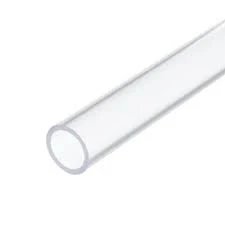dec . 07, 2024 02:05 Back to list
polyethylene pipe fittings
Understanding Polyethylene Pipe Fittings A Comprehensive Overview
Polyethylene pipe fittings are integral components in various piping systems, widely used across multiple sectors including water distribution, agriculture, chemical industries, and gas transmission. Their flexibility, durability, and resistance to corrosion make them a preferred choice compared to traditional materials like metal and PVC. This article aims to delve into the different types, benefits, and applications of polyethylene pipe fittings.
What are Polyethylene Pipe Fittings?
Polyethylene (PE) pipe fittings are connectors that help join polyethylene pipes, making them essential for assembling a complete piping network. These fittings come in various shapes and sizes, designed to accommodate the specific requirements of different projects. Common types include elbows, tees, reducers, caps, and couplings. Their production typically involves the use of high-density polyethylene (HDPE) or low-density polyethylene (LDPE), both known for their strength and flexibility.
Benefits of Polyethylene Pipe Fittings
1. Corrosion Resistance One of the standout features of polyethylene materials is their resistance to corrosion and chemical damage. Unlike metal pipes that can rust or degrade over time when in contact with certain substances, polyethylene fittings retain their integrity and performance, making them ideal for transporting corrosive materials.
2. Lightweight and Flexible Polyethylene fittings are lightweight, which simplifies transport and installation. Their flexibility allows them to be used in various configurations, accommodating shifts in the ground and reducing the risk of damage during installation.
3. Longevity PE fittings have a long service life, often exceeding 50 years under proper conditions. Their resistance to environmental stressors ensures that they remain functional over many years, making them a cost-effective solution in the long run.
4. Cost-Effectiveness While the initial investment in polyethylene pipe fittings may be comparable to traditional materials, the overall costs can be lower due to fewer maintenance requirements, longer lifespan, and reduced installation time.
polyethylene pipe fittings

Applications of Polyethylene Pipe Fittings
Due to their numerous advantages, polyethylene pipe fittings find applications in a variety of sectors
- Water Supply Systems They are commonly used in municipal water systems for both potable and non-potable water distribution, ensuring safe and reliable delivery.
- Irrigation Agriculture benefits immensely from PE fittings in irrigation systems. Their durability and resistance to UV radiation make them ideal for outdoor applications.
- Oil and Gas In the oil and gas industry, HDPE fittings are used for transporting hydrocarbons and other chemicals safely, reducing the risk of leaks and environmental hazards.
- Waste Management Polyethylene pipe fittings are also utilized in sewer systems and drainage, where their strength and flexibility help manage the flow of wastewater efficiently.
Conclusion
Polyethylene pipe fittings represent a significant advancement in piping technology, offering unmatched benefits for a wide range of applications. Their corrosion resistance, flexibility, and cost-effectiveness make them a superior choice for modern piping systems. As industries continue to seek durable and safe solutions for fluid transport, polyethylene fittings will undoubtedly play a crucial role in shaping a more efficient future. Through understanding their various types and applications, engineers and contractors can make informed decisions that enhance system performance and longevity.
-
Durable PP Rigid Sheet: Lightweight, Chemical Resistant Solutions
NewsAug.21,2025
-
PVC Grey Sheet for Extraction: Chemical Resistant & Durable
NewsAug.19,2025
-
Durable PVC Pipe Fittings for Plumbing & Irrigation Needs
NewsAug.18,2025
-
HDPE Steel Belt Reinforced Spiral Corrugated Pipe | High Strength
NewsAug.17,2025
-
HDPE Pipe Fittings: Durable, Leak-Proof Solutions
NewsAug.16,2025
-
Premium CPVC Sheet: High-Temp & Chemical Resistant Solutions
NewsAug.15,2025

